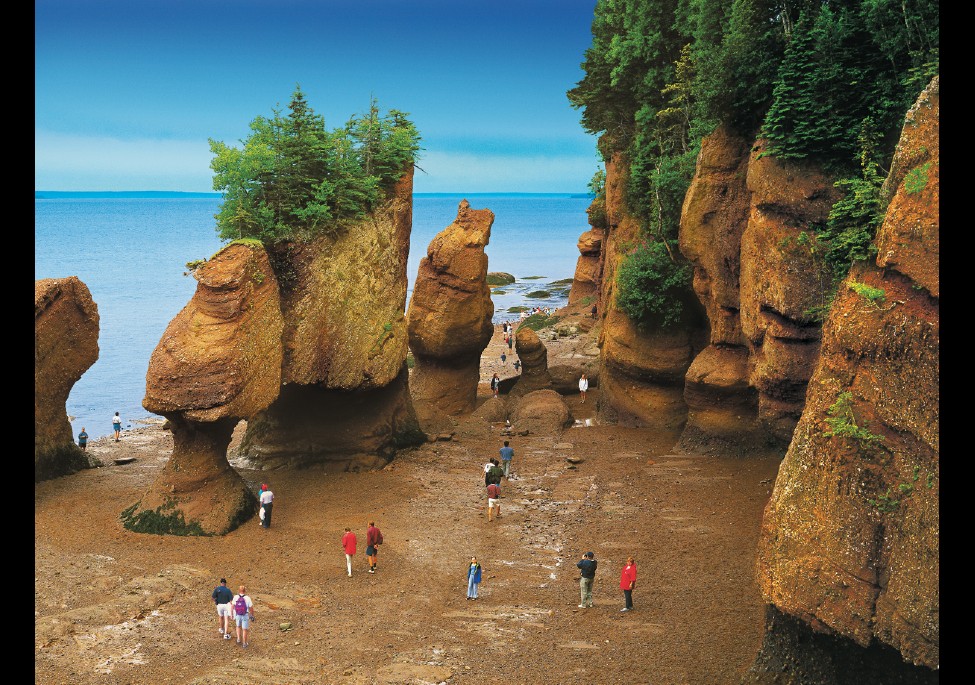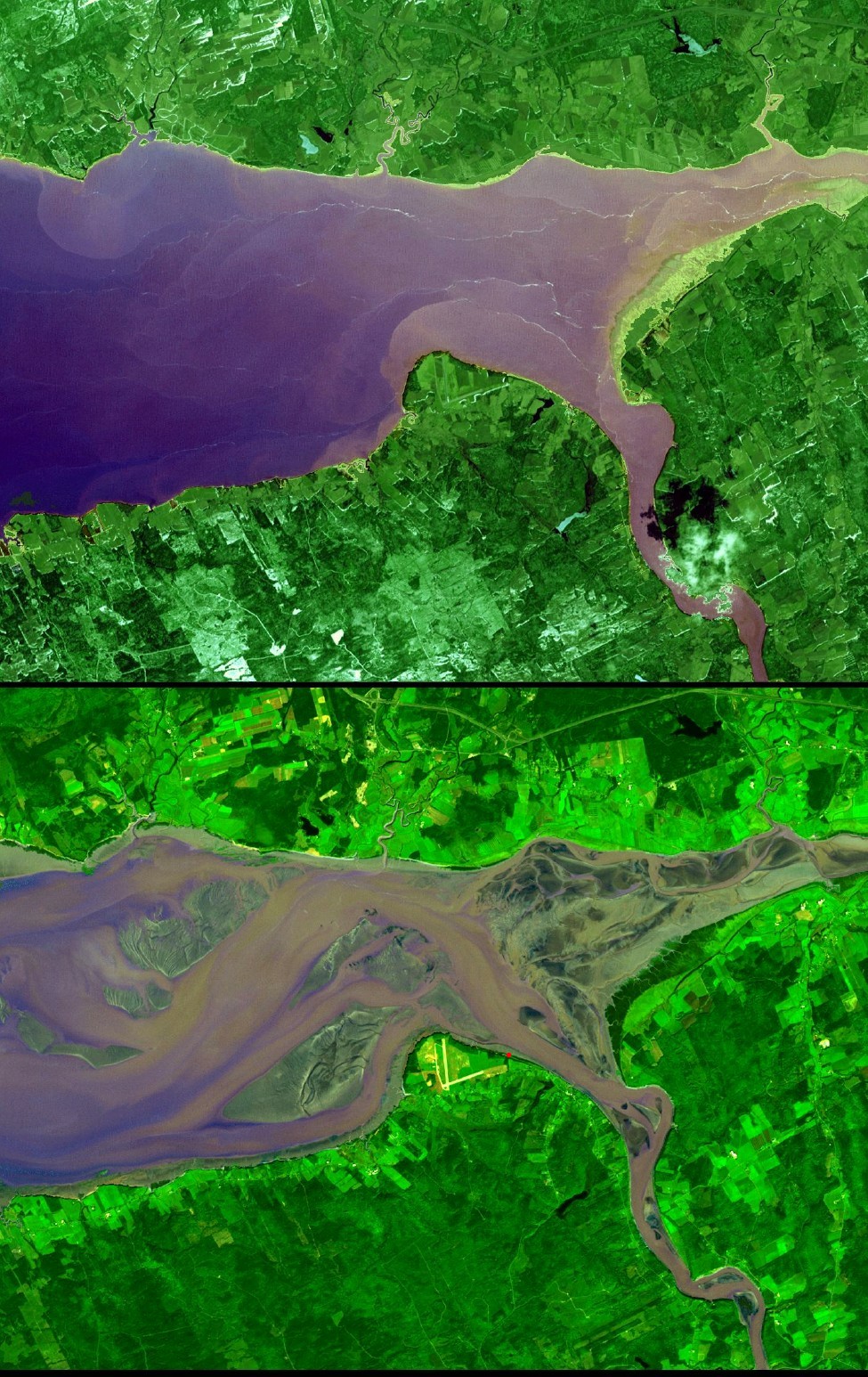
What) In the Bay of Fundy you can see two high and two low tides each day. The time between a high and low tide, on average, is six hours and 13 minutes. If you come back to the same place two or three days in a row, you will notice that the water is at its highest and lowest about an hour later each day. This is because the tides work on a lunar or moon day which is 24 hours and 52 minutes long. While the earth is turning on its axis the moon is orbiting in the same direction around the earth and it takes one day and 52 minutes for a point on the earth to reappear directly beneath the moon.
Fundy's tides are the highest in the world because of an unusual combination of resonance (or seiche) and the shape of the bay. Like water in any basin, the water in the Bay of Fundy has a natural rocking motion called a seiche. You could compare this to the movement of water in a bathtub. Although the water in a bathtub sloshes from one end to the other and back again in a few seconds, it takes about 13 hours for the water in the bay to rock from the mouth of the bay to the head of the bay and back again. The Atlantic Ocean tide rising and flooding into the bay every 12 hours and 25 minutes reinforces the rocking motion. To imagine this, picture an adult giving a gentle push to a child on a swing. Just a very small push, at the right time, is enough to make it go higher and higher. A pulse from the ocean tides sustains the seiche in the bay.
The height of the tide varies from day to day but the fluctuations are predictable. They are mainly caused by: 1) the degree to which the sun and moon's influences are acting in the same direction; and 2) the varying distance between the moon and the earth. Twice each month, at the time of the new moon and the full moon, the gravitational influences of the moon and sun reinforce one another and cause the tides to rise to greater heights and fall lower than average tides. These are called spring tides from the Old English word "springan" which means to well up. At the time of the quarter moon, when the sun, earth, and moon form a right angle, the difference between high and low tide is less than average. These are neap tides, from the Old English "nep", as in nipped in the bud. Every 27 and a half days, when the moon reaches a point in its orbit closest to the earth (called perigee) the tidal range is increased. When perigean tides coincide with spring tides, extreme tides can be expected. In the Bay of Fundy, these conditions may create tides as large as 53 feet. Conversely, when the moon is at apogee, its farthest point from the earth, even spring tides are diminished. (1)
Where) I
didn't need to ask anyone
Why)
Initially, I had planned to drive in and see Fundy National
Park but once we decided to go through Selma
instead, I did some research and discovered that the extreme
Fundy tides were the same all over. When we drove by and
took these pictures, the tides were nearly at their lowest
level for that day. 
In case you didn't know or hadn't thought about it, this means that my main photographic subject was mud.


I have added the red dot on the lower image to show our approximate location when I took the two pictures that started the section. (3)


